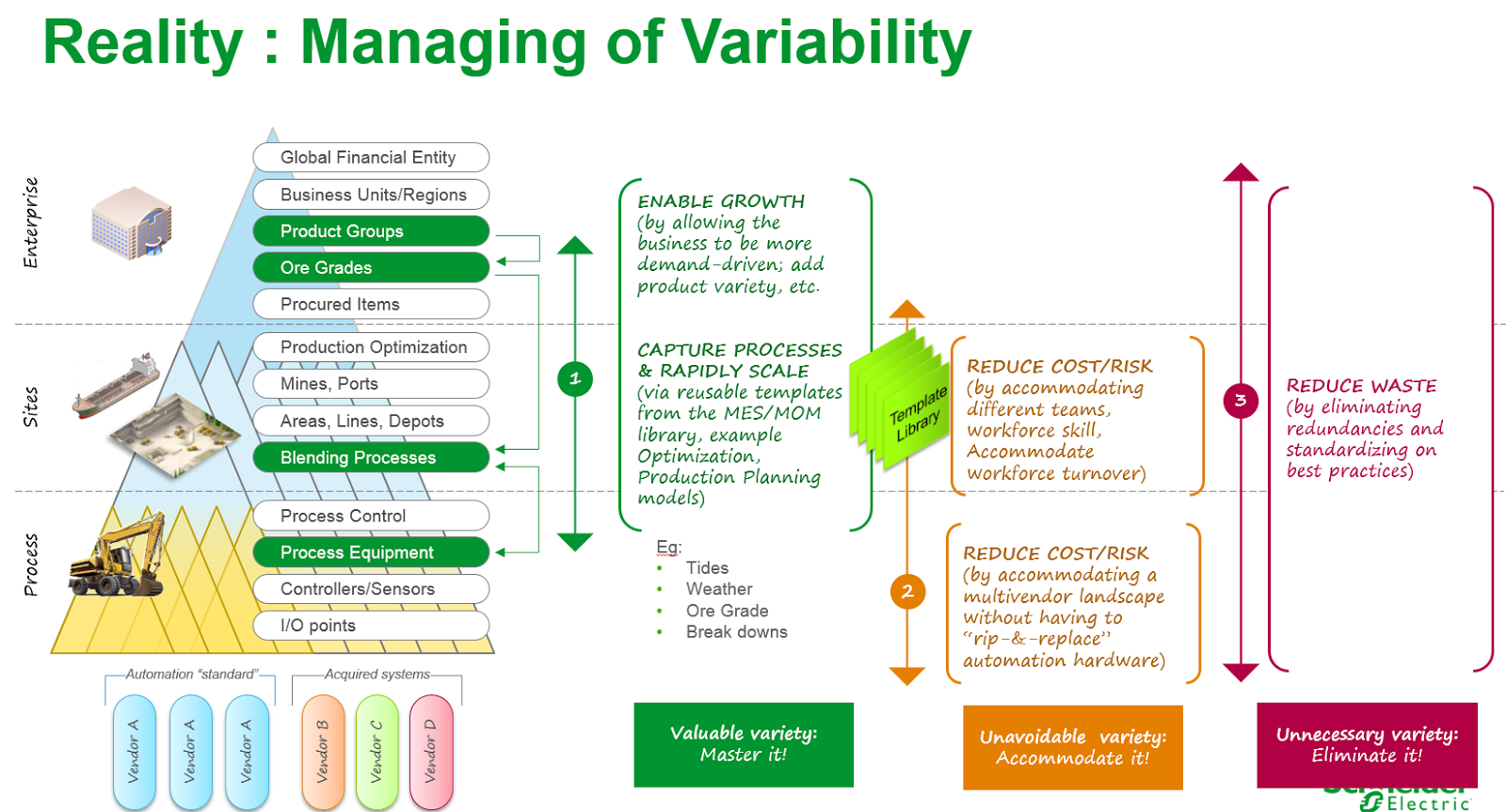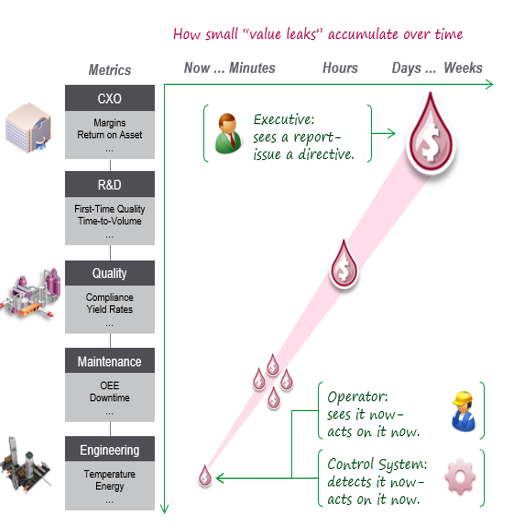I wrote about this 2 months ago, but seem to have spent the
last two weeks talking and working through this “managing of Variability/
variation” as key. Too many people said that you are forcing standards, but
these only come once you have a platform of abstraction on top of variation you
want manage or accommodate.
“How do you manage
this Variability, so that production
consistency, agility and increased production output are achieved?” While the
concept of everything being a standard would be great, it is not practical and there are variability’s that we
must “manage” and others we must “accommodate”.
“Standardization is not a business goal – it is a means
to an end.
The goal of business is to make a profit.”
- Continuous Improvement Leader
Thus, any standardization effort must distinguish between
the different types of variety in a way that maximizes profit without
constraining the business strategy. Thus, the business challenge can be summed
up (using the mining example illustrated in
the above) as follows:
- Mastering necessary variety: When running a mine or plant, such
things as Ore Body quality (raw material quality) that varies not
according to the ideal plan. Breakdowns of
equipment, weather like hurricanes/ cyclones disrupt ports and operations,
tides effect ships coming into ports. These are “necessary variability” that
all must be “mastered” to optimize production, operations, and you
need to put systems in that allow you change plans and strategies as required.
I had one workshop last week where the team
was looking at long term strategies in the traditional sense. They had not
adjusted their thinking to a long term strategy now has to make of shorter
operational plans that can be adjusted in “near real-time” due to “master”
these “necessary” variability. The operational systems must empower
all people to be planners in their time span, to empower actionable decisions
that are related to achieving the
bigger strategy, and clear impact is understood. As products, deliverables change and vary
more regularly, plans will become shorter and increased volume of plans to
achieve a business strategy.
- Accommodating unavoidable variety: Situations like different automation
vendors or implementations across equipment, processes and sites. It is impractical
to think a company can acquire new or existing equipment and processes and
expect a particular PLC or automation system, the OEM equipment suppliers
just make the change to cost prohibitive. In order for companies to grow
and be agile, they must “accommodate”
natural variety from equipment suppliers, existing sites, but be able to
apply their operational standards/ processes across the different
equipment. Another area that that
limits operational excellence is the different “experience” levels of the workforce,
from shift to shift, from site to site. The operational systems must
abstract operational/ or site experience by embedding operational
procedures/ actions into the system providing a guidance and consistency
of operational decision and action. This
starts to generalize the workforce experience enabling significant
operational workforce flexibility between sites, and hiring, addressing
the challenges of workforce / skill shortage.
- Eliminating
unnecessary variety: Anything other than the above two scenarios
would be eligible for standardization.
It is NOT about “rip and replace with standards it is about “mastering and accommodating” these variations
while enabling operational excellence growth and continuity by applying
operational standards across this variability. Key is “platform strategies”
that abstract the variability and can absorb variability while provide a
platform for services that enable
standards to be built on. Providing the architecture for “sustainable
innovation” through managed standards that can evolve over time. Standards can
be operational models in supervisory for alignment of context and structure, as
well as operational actions to guide users through tasks in a consistent way. Also,
configuration of control strategies should be over multiple vendors, where
common control standards for process can be deployed over multiple controllers
but managed in structured way.
Does this mean one platform? NO, not for the industrial
landscape different layers of the industrial operations landscape have
different roles. Providing different services and different ability to absorb a
variety, but the common services between
these platforms must enable them to “tightly aligned but loosely coupled”.
As we have pointed out the
key to success in this dynamic but changing world is the ability to “Master Necessary Variety” in your
business, while “Accommodating
Unavoidable Variation”. Providing a structure to acquire new “brownfield
plants” accommodate their existing automation and process. But apply the
new companies’ differentiation through applying their operational procedures
across these acquired plants.
This is not a new
concept, but I seem to explain it a lot now
days!!!!





